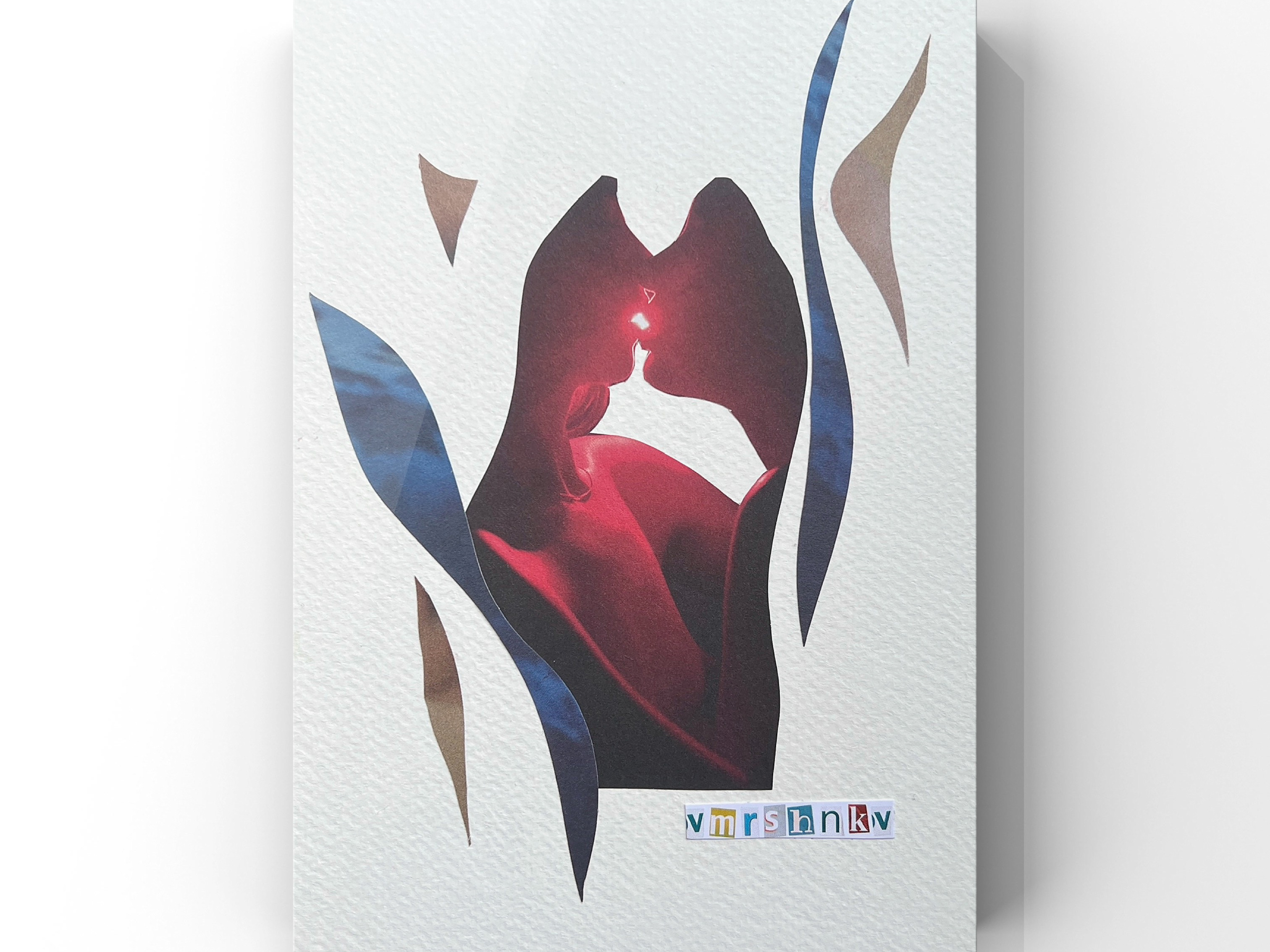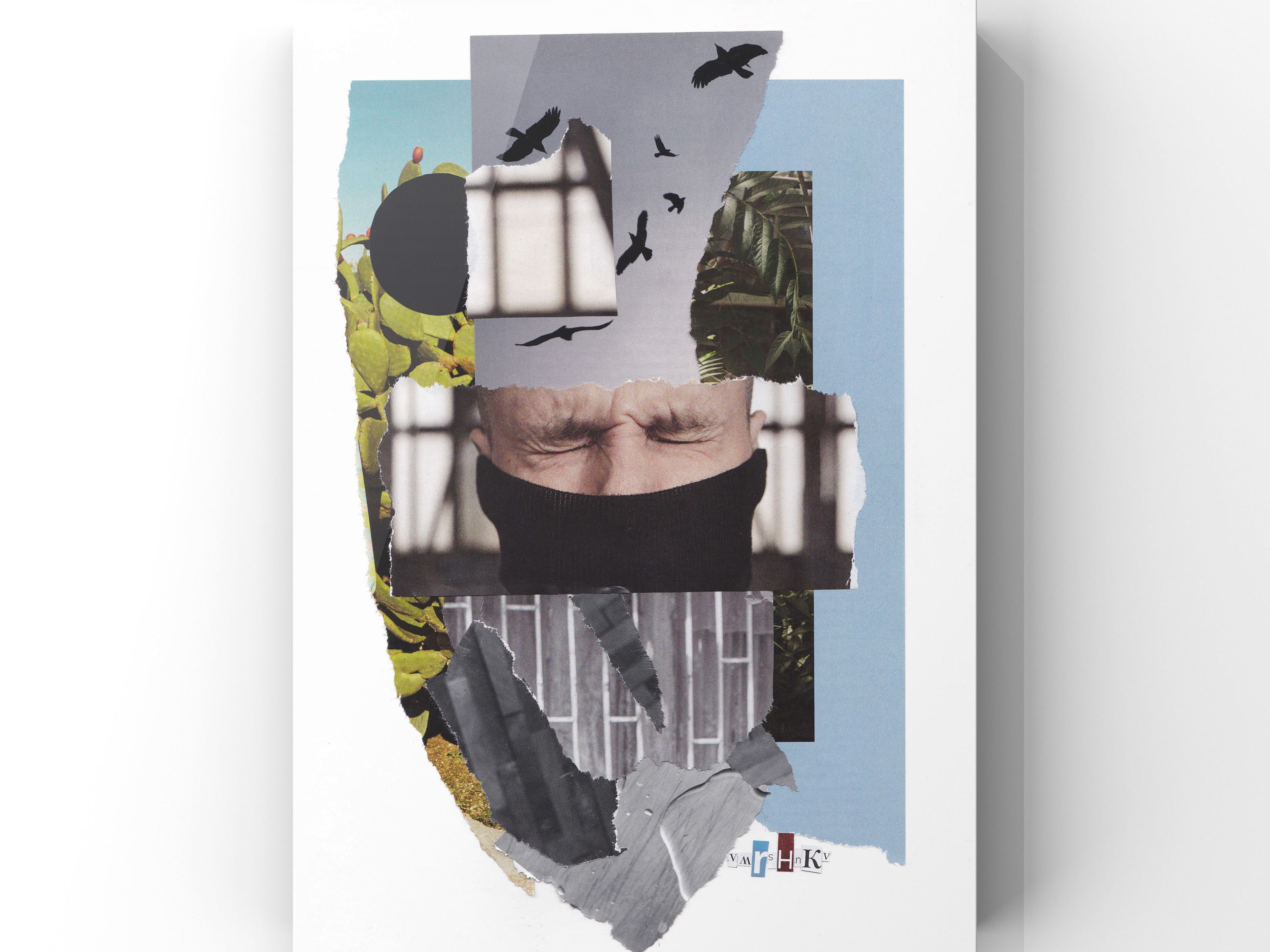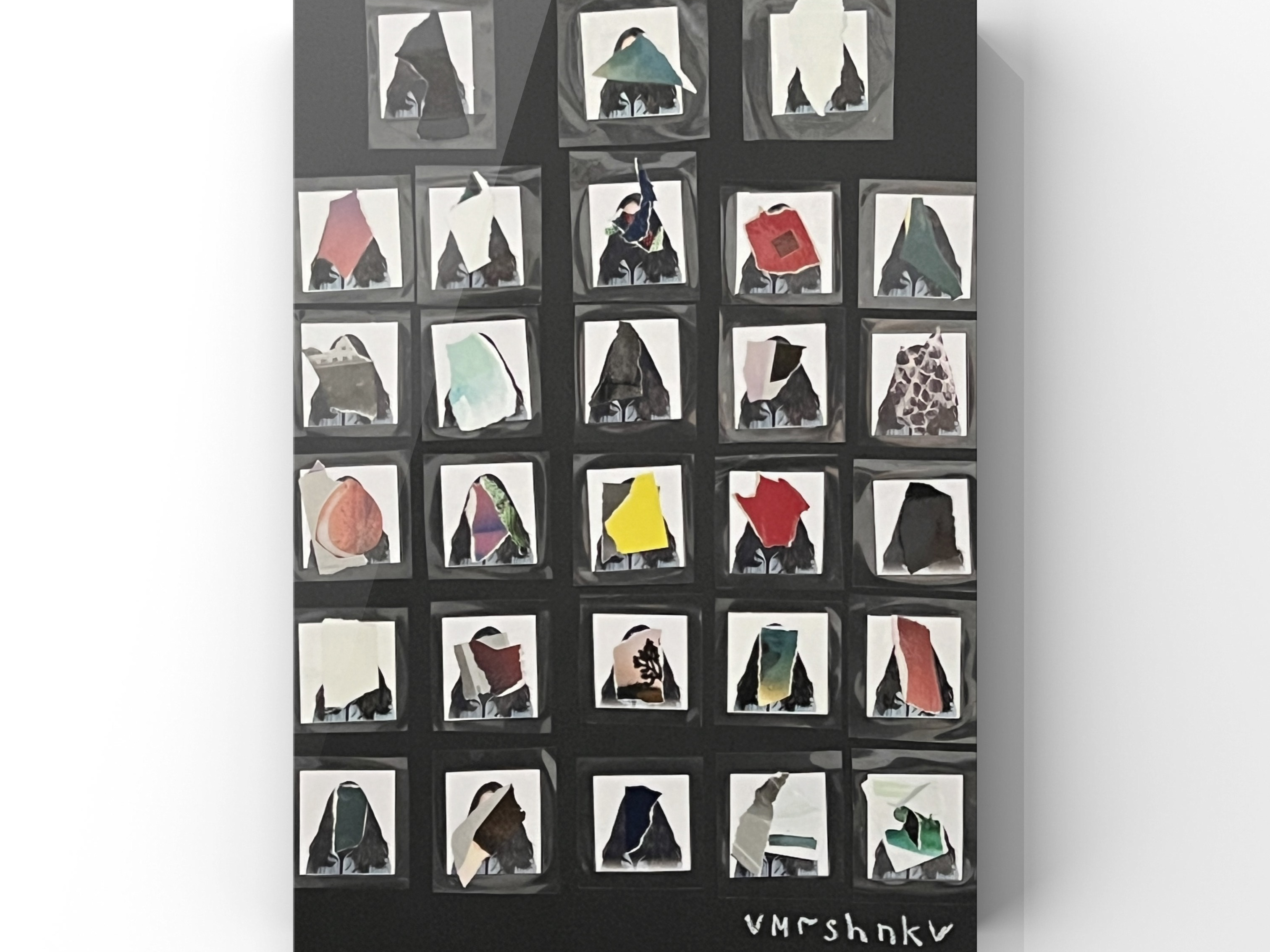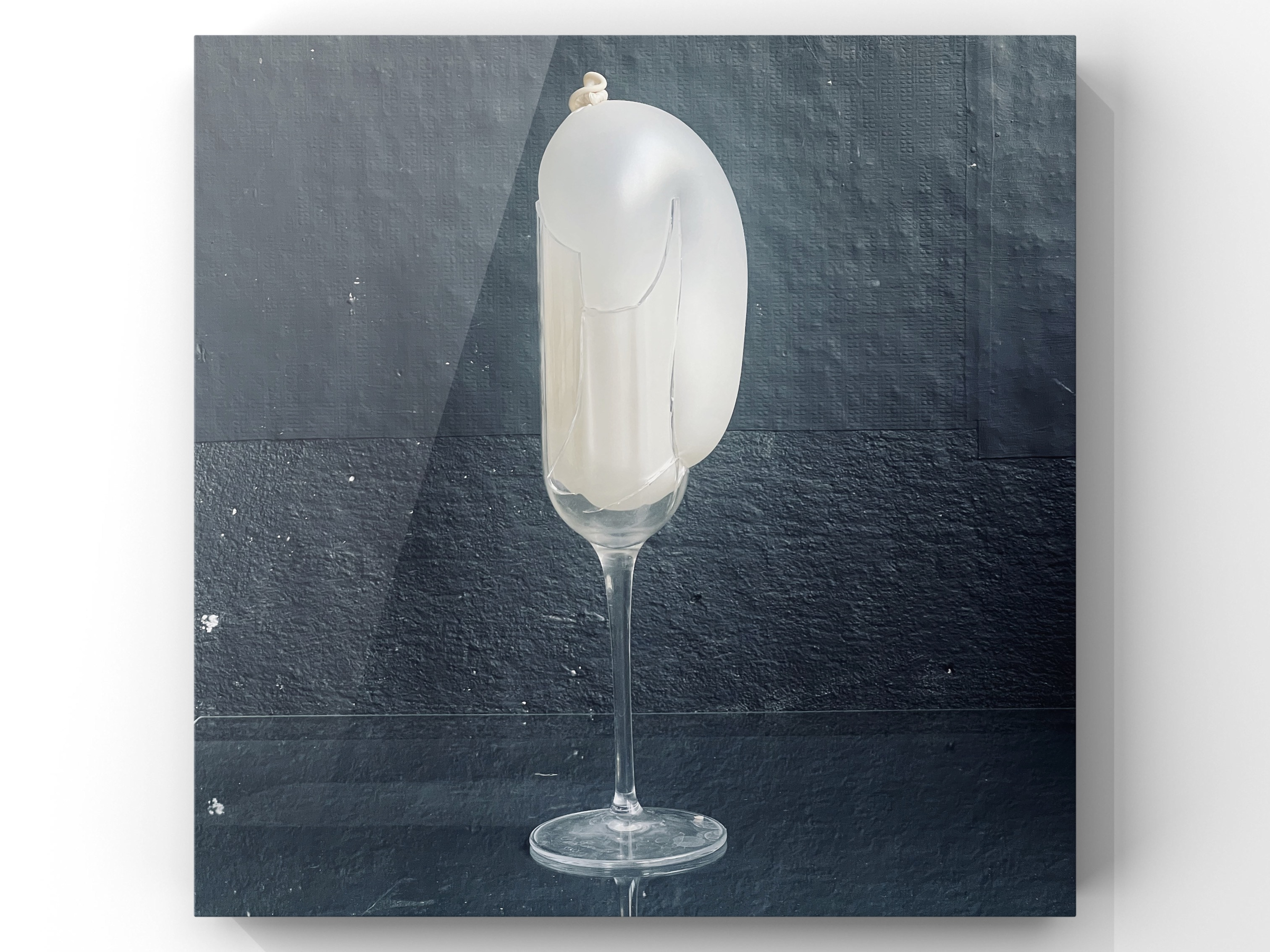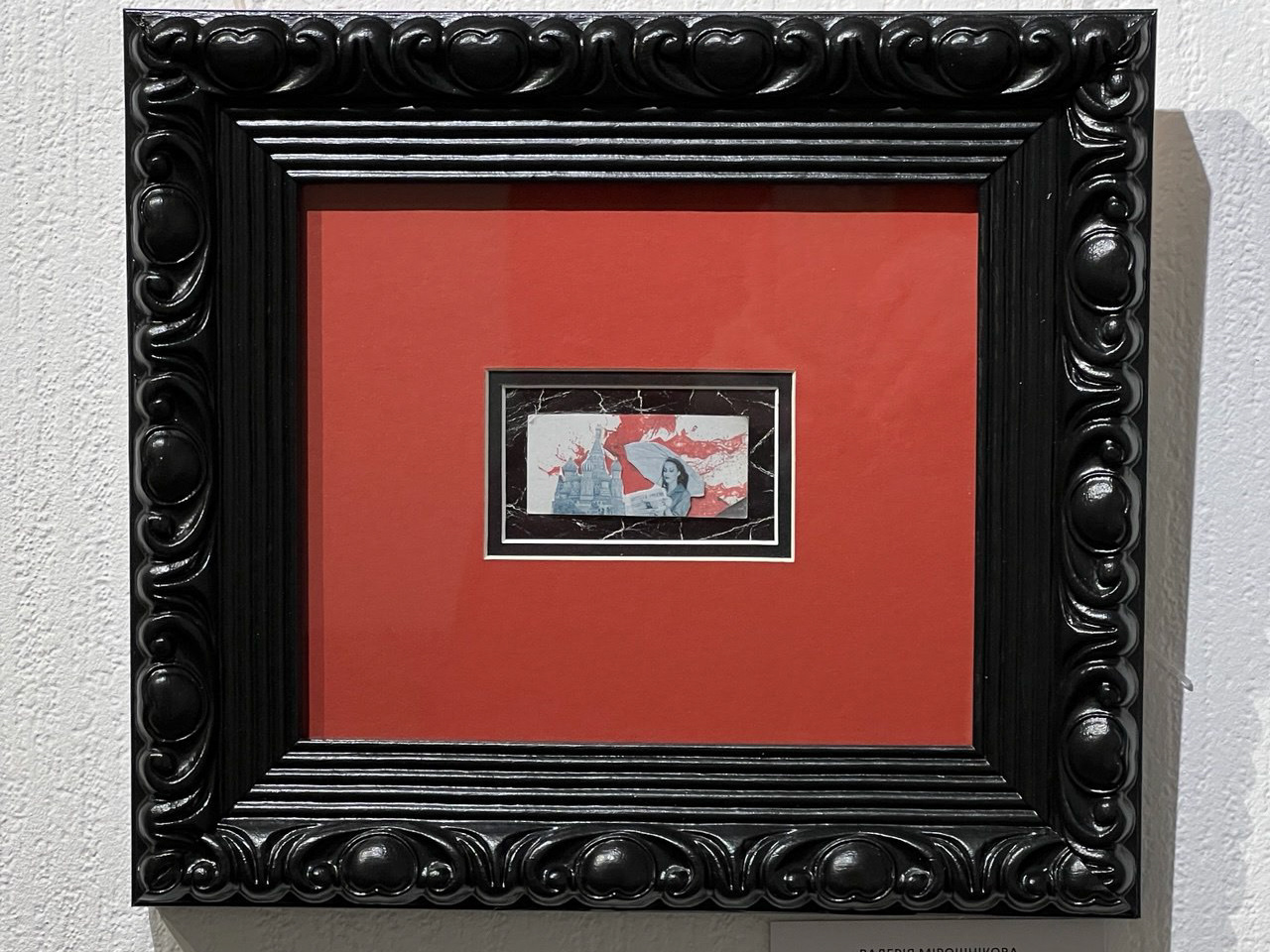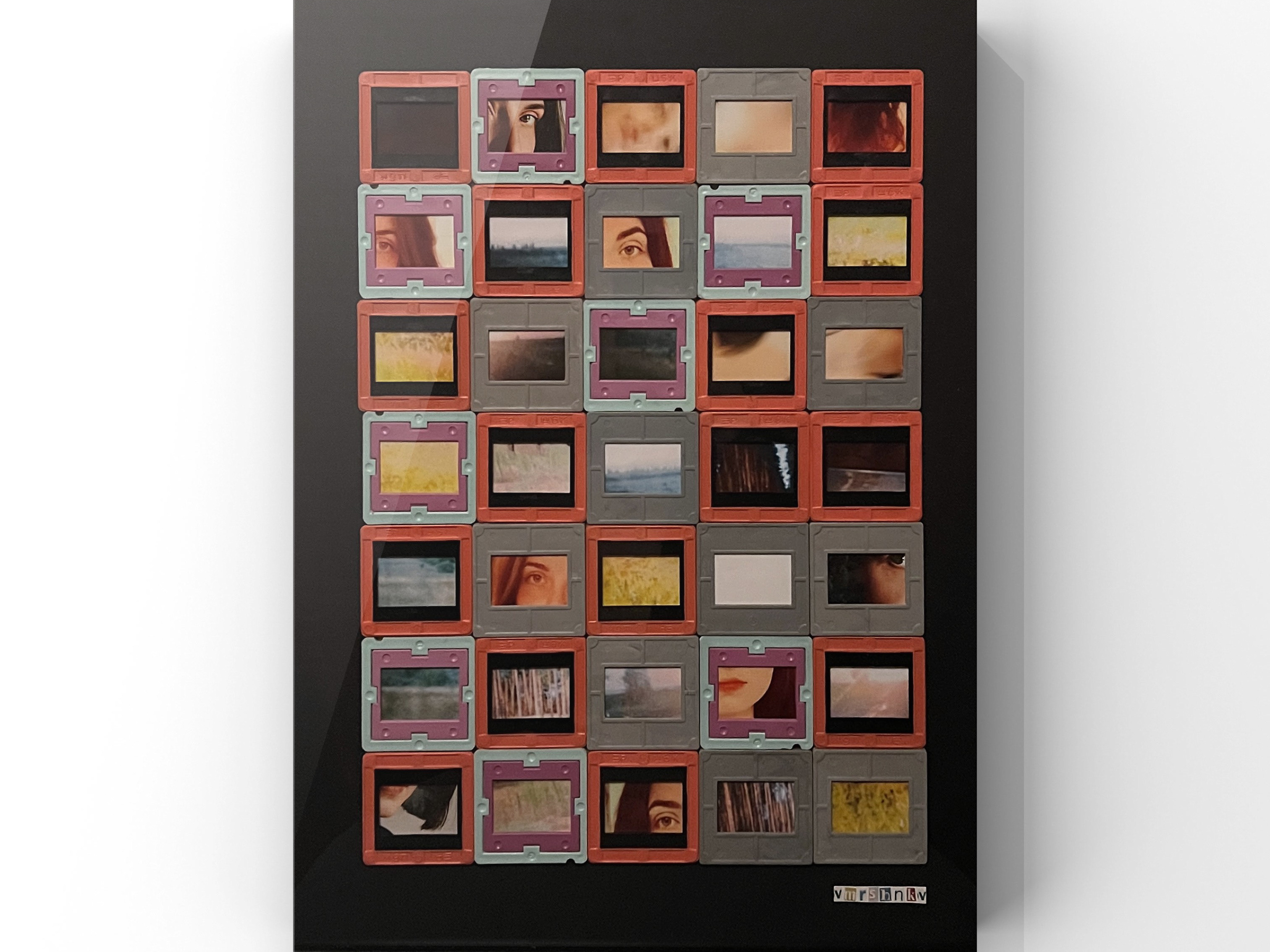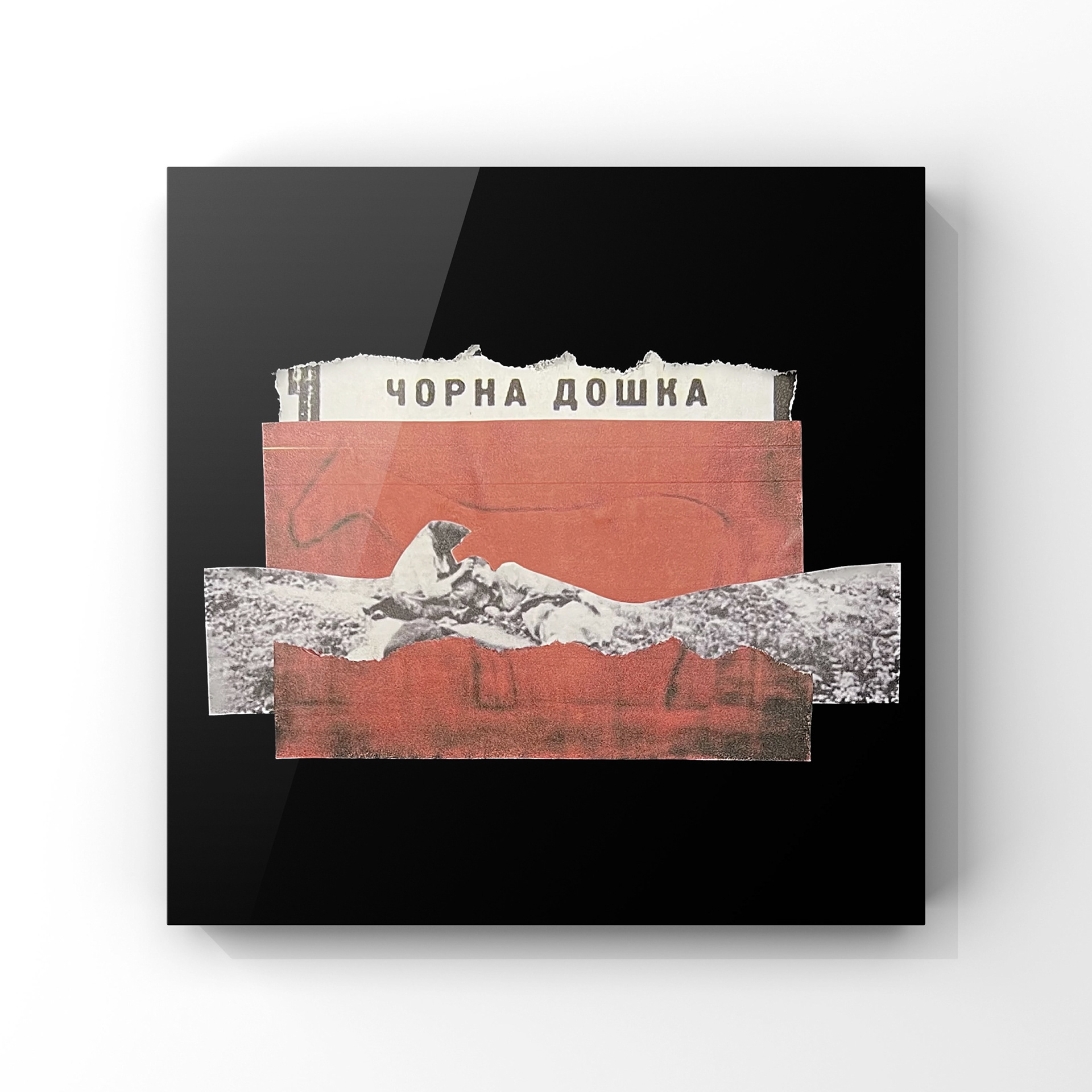

Чорна дошка | Black Board
Матеріали: Копія картини Анатолія Криволапа "Кінь. Вечір", копії архівних фотографій з Музею Голодомору.
Розміри: (вказати, якщо потрібно)
"Чорна дошка" — це візуальне переосмислення однієї з найтемніших сторінок української історії: репресивної політики радянської влади під час Голодомору 1932–1933 років.
Назва проєкту відсилає до реальної практики того часу — внесення сіл, колгоспів та цілих районів до так званого «чорного списку». Це означало повну ізоляцію: блокаду поставок, репресії, штрафи, конфіскацію зерна, виселення і депортації. Ціллю тоталітарної влади було повне підкорення українського селянства, його перетворення на безправну робочу силу в новій системі колгоспного рабства.
Назва проєкту відсилає до реальної практики того часу — внесення сіл, колгоспів та цілих районів до так званого «чорного списку». Це означало повну ізоляцію: блокаду поставок, репресії, штрафи, конфіскацію зерна, виселення і депортації. Ціллю тоталітарної влади було повне підкорення українського селянства, його перетворення на безправну робочу силу в новій системі колгоспного рабства.
У роботі використовуються копії картини Анатолія Криволапа "Кінь. Вечір", як символ природи, сили й вільного духу — тих якостей, які радянська система прагнула знищити.
Доповненням стали архівні фотографії часів Голодомору: обличчя, пейзажі, зруйновані життя — німі свідки геноциду.
Доповненням стали архівні фотографії часів Голодомору: обличчя, пейзажі, зруйновані життя — німі свідки геноциду.
Композиція поєднує особисте й колективне: образ коня як уособлення волі та мертвий спокій архівних документів творять напругу між життям і його руйнацією.
Чорна дошка — це пам’ять про насильство, здійснене через голод і терор. Це візуальний акт опору забуттю.
Чорна дошка — це пам’ять про насильство, здійснене через голод і терор. Це візуальний акт опору забуттю.
Проєкт говорить не тільки про минуле. Він також резонує із сьогоденням, коли питання свободи, пам’яті й права на ідентичність для України знову є питанням виживання.
Black Board
Materials: A copy of Anatolii Kryvolap's painting "Horse. Evening," copies of archival photographs from the Holodomor Museum.
Dimensions: (Specify if needed)
"Black Board" is a visual rethinking of one of the darkest pages in Ukrainian history: the repressive policies of Soviet power during the Holodomor of 1932–1933.
The title of the project refers to the real practice of the time — the inclusion of villages, collective farms, and entire districts in the so-called "black list." This meant complete isolation: blockade of supplies, repression, fines, grain confiscation, evictions, and deportations. The goal of the totalitarian regime was the complete subjugation of the Ukrainian peasantry, transforming them into a powerless labor force within the new system of collective farm slavery.
The title of the project refers to the real practice of the time — the inclusion of villages, collective farms, and entire districts in the so-called "black list." This meant complete isolation: blockade of supplies, repression, fines, grain confiscation, evictions, and deportations. The goal of the totalitarian regime was the complete subjugation of the Ukrainian peasantry, transforming them into a powerless labor force within the new system of collective farm slavery.
The work uses copies of Anatolii Kryvolap's painting "Horse. Evening" as a symbol of nature, strength, and free spirit — qualities that the Soviet system sought to destroy.
The project is complemented by archival photographs from the time of the Holodomor: faces, landscapes, shattered lives — mute witnesses to genocide.
The project is complemented by archival photographs from the time of the Holodomor: faces, landscapes, shattered lives — mute witnesses to genocide.
The composition combines the personal and collective: the image of the horse as an embodiment of freedom and the dead stillness of archival documents create a tension between life and its destruction.
Black Board is a reminder of the violence inflicted through hunger and terror. It is a visual act of resistance to oblivion.
Black Board is a reminder of the violence inflicted through hunger and terror. It is a visual act of resistance to oblivion.
The project speaks not only about the past. It also resonates with the present, when the issues of freedom, memory, and the right to identity for Ukraine are once again a matter of survival.
Колосок
Візуальна робота, яка досліджує жахливі наслідки постанови ЦВК та РНК СРСР від 7 серпня 1932 року — законодавчого акту, що став частиною механізму репресій під час Голодомору 1932–1933 років.
Візуальна робота, яка досліджує жахливі наслідки постанови ЦВК та РНК СРСР від 7 серпня 1932 року — законодавчого акту, що став частиною механізму репресій під час Голодомору 1932–1933 років.
Концепція відео-роботи "Колосок"
Проект «Колосок» фокусується на одному з найбільш жорстоких документів радянської влади часів Голодомору — постанові, що визначала «ворогами народу» будь-яких громадян, які порушували соціалістичну власність, зокрема, крали зерно чи здійснювали будь-які дії, що загрожували державним колгоспам. Результатом цього було масове застосування репресій, зокрема розстріли, концентраційні табори, депортації та інші форми насильства. Цей документ став ключовим інструментом для здійснення політики тотального контролю і знищення будь-якого прояву опору серед українських селян.
Відео-робота має на меті висвітлити цю жорстокість через поєднання архівних матеріалів, фотографій, які збереглися з того часу, та інтерпретацію сцен, що натякають на наслідки цього документу, створюючи напружену атмосферу безвиході й страху.
Структура роботи
Матеріали: В основі відео — архівні фотографії з Музею Голодомору, що зображують селян, втрачені пейзажі та обличчя людей, яким не вдалося вижити в умовах масового голоду. Вони стають символом не тільки особистих трагедій, але й системної жорстокості, яка охопила всю країну.
Аудиторія: Робота спрямована на широку аудиторію, зокрема на тих, хто цікавиться історією Голодомору, радянськими репресіями та культурною пам'яттю України. Відео підкреслює важливість збереження історичної пам'яті, щоб подібне насильство не повторилося.
Візуальні ефекти: Відео поєднує елементи історичних фотографій із абстрактними візуальними метафорами, що створюють уявлення про поглинену темряву, страх і боротьбу за виживання. Ці ефекти підсилюють емоційний вплив роботи на глядача, занурюючи його в атмосферу того часу.
Ідея та контекст
У центрі композиції — символ колоска, як елемент, що прямо пов'язаний із життям, з ним пов'язана надія на врожай і порятунок, але водночас саме він став причиною жорстоких покарань, таких як розстріл і депортація. Поява колоска в кадрі, що поступово перетворюється на символ зла, страху й жорстокості, підкреслює трагічну іронію того, що зерно, яке має бути джерелом життя, ставало предметом боротьби за виживання і водночас приводом до страшних покарань.
У центрі композиції — символ колоска, як елемент, що прямо пов'язаний із життям, з ним пов'язана надія на врожай і порятунок, але водночас саме він став причиною жорстоких покарань, таких як розстріл і депортація. Поява колоска в кадрі, що поступово перетворюється на символ зла, страху й жорстокості, підкреслює трагічну іронію того, що зерно, яке має бути джерелом життя, ставало предметом боротьби за виживання і водночас приводом до страшних покарань.
Ключова метафора відео — «колосок» як єдиний порятунок, що стає небезпечним. Це відображення того, як радянська влада підходила до селянства, змушуючи їх підкорятися, порушуючи всі моральні та людські принципи.
Повідомлення проєкту
«Колосок» — це нагадування про одну з найбільших трагедій, що сталася на українських землях. Водночас це заклик до пам'яті, щоб історія не забувалася, адже відновлення ідентичності та боротьба за права людини — це ті питання, які і сьогодні залишаються актуальними для України. Відео звертається до глядача не лише через історичні факти, але й через емоційну силу образів, які викликають глибоке переживання.
«Колосок» — це нагадування про одну з найбільших трагедій, що сталася на українських землях. Водночас це заклик до пам'яті, щоб історія не забувалася, адже відновлення ідентичності та боротьба за права людини — це ті питання, які і сьогодні залишаються актуальними для України. Відео звертається до глядача не лише через історичні факти, але й через емоційну силу образів, які викликають глибоке переживання.
Завершення
Робота ставить запитання: як ми можемо відновити пам'ять про наші втрати? Як пам'ять про Голодомор і репресії, що стали його невід'ємною частиною, може впливати на наше теперішнє, допомагаючи утвердити свободу і гідність? Під час перегляду цього відео глядач спостерігає за рухом не лише історії, а й за рухом пам'яті, яка має зберігати і захищати.
Робота ставить запитання: як ми можемо відновити пам'ять про наші втрати? Як пам'ять про Голодомор і репресії, що стали його невід'ємною частиною, може впливати на наше теперішнє, допомагаючи утвердити свободу і гідність? Під час перегляду цього відео глядач спостерігає за рухом не лише історії, а й за рухом пам'яті, яка має зберігати і захищати.
Kolosok
Video work exploring the terrifying consequences of the Decree of the Central Executive Committee (CEC) and the People's Commissariat of the Soviet Union (NRC) on August 7, 1932 — a legislative act that became part of the repressive machinery during the Holodomor of 1932–1933.
Video work exploring the terrifying consequences of the Decree of the Central Executive Committee (CEC) and the People's Commissariat of the Soviet Union (NRC) on August 7, 1932 — a legislative act that became part of the repressive machinery during the Holodomor of 1932–1933.
Concept of the "Kolosok" Video Work
The project "Kolosok" focuses on one of the most brutal documents of Soviet authority during the Holodomor — the decree that classified citizens who threatened state property, such as stealing grain or sabotaging collective farms, as "enemies of the people." The result of this classification was the widespread use of repression, including executions, concentration camps, deportations, and other forms of violence. This decree became a key tool in the totalitarian regime's policy of control and annihilation of any form of resistance among Ukrainian peasants.
The video work aims to highlight this cruelty by combining archival materials, photographs that have survived from that time, and an interpretation of scenes that hint at the repercussions of this decree, creating an intense atmosphere of helplessness and fear.
Structure of the Work
Materials: The video is based on archival photographs from the Holodomor Museum, depicting peasants, ruined landscapes, and the faces of those who did not survive the mass famine. These images serve as symbols not only of personal tragedy but also of systemic cruelty that engulfed the entire country.
Audience: The work is aimed at a broad audience, particularly those interested in the history of the Holodomor, Soviet repression, and Ukrainian cultural memory. The video emphasizes the importance of preserving historical memory to prevent the repetition of such violence.
Visual Effects: The video combines historical photographs with abstract visual metaphors that evoke the image of engulfing darkness, fear, and the struggle for survival. These effects amplify the emotional impact of the work on the viewer, immersing them in the atmosphere of that time.
Idea and Context
At the center of the composition is the symbol of the grain stalk (kolosok), an element directly connected with life, hope for a harvest, and salvation, but at the same time, it became the cause of brutal punishment, such as execution and deportation. The appearance of the grain stalk in the frame, which gradually transforms into a symbol of evil, fear, and cruelty, underscores the tragic irony that grain, which should be a source of life, became the subject of a deadly struggle for survival and, at the same time, a justification for horrific punishment.
At the center of the composition is the symbol of the grain stalk (kolosok), an element directly connected with life, hope for a harvest, and salvation, but at the same time, it became the cause of brutal punishment, such as execution and deportation. The appearance of the grain stalk in the frame, which gradually transforms into a symbol of evil, fear, and cruelty, underscores the tragic irony that grain, which should be a source of life, became the subject of a deadly struggle for survival and, at the same time, a justification for horrific punishment.
The key metaphor of the video is the "kolosok" as a means of salvation that becomes dangerous. It reflects how the Soviet regime treated the peasantry, forcing them to submit and violating all moral and human principles.
Message of the Project
"Kolosok" serves as a reminder of one of the greatest tragedies that occurred on Ukrainian soil. At the same time, it is a call to preserve memory so that history is not forgotten. The restoration of identity and the fight for human rights remain issues that are still highly relevant for Ukraine today. The video addresses the viewer not only through historical facts but also through the emotional power of images that provoke deep reflection.
"Kolosok" serves as a reminder of one of the greatest tragedies that occurred on Ukrainian soil. At the same time, it is a call to preserve memory so that history is not forgotten. The restoration of identity and the fight for human rights remain issues that are still highly relevant for Ukraine today. The video addresses the viewer not only through historical facts but also through the emotional power of images that provoke deep reflection.
Conclusion
The work raises the question: How can we restore the memory of our losses? How can the memory of the Holodomor and the repression that was an inseparable part of it influence our present and help affirm freedom and dignity? While watching this video, the viewer observes the movement not just of history but of memory itself, which must be preserved and protected.
The work raises the question: How can we restore the memory of our losses? How can the memory of the Holodomor and the repression that was an inseparable part of it influence our present and help affirm freedom and dignity? While watching this video, the viewer observes the movement not just of history but of memory itself, which must be preserved and protected.

